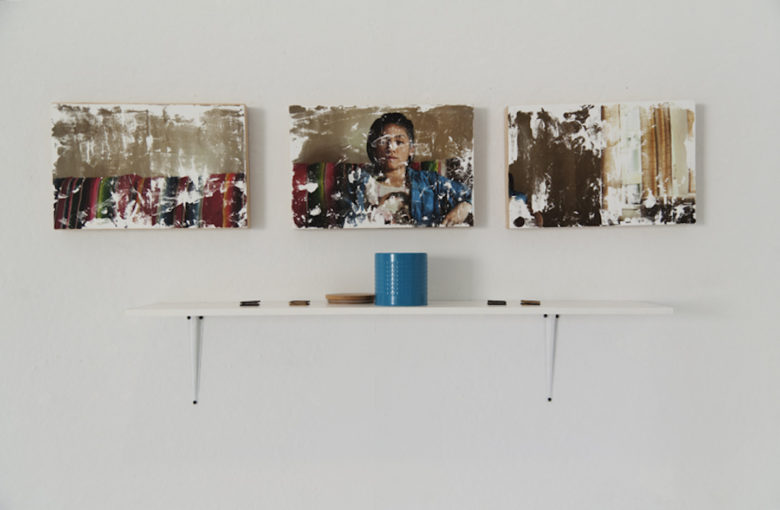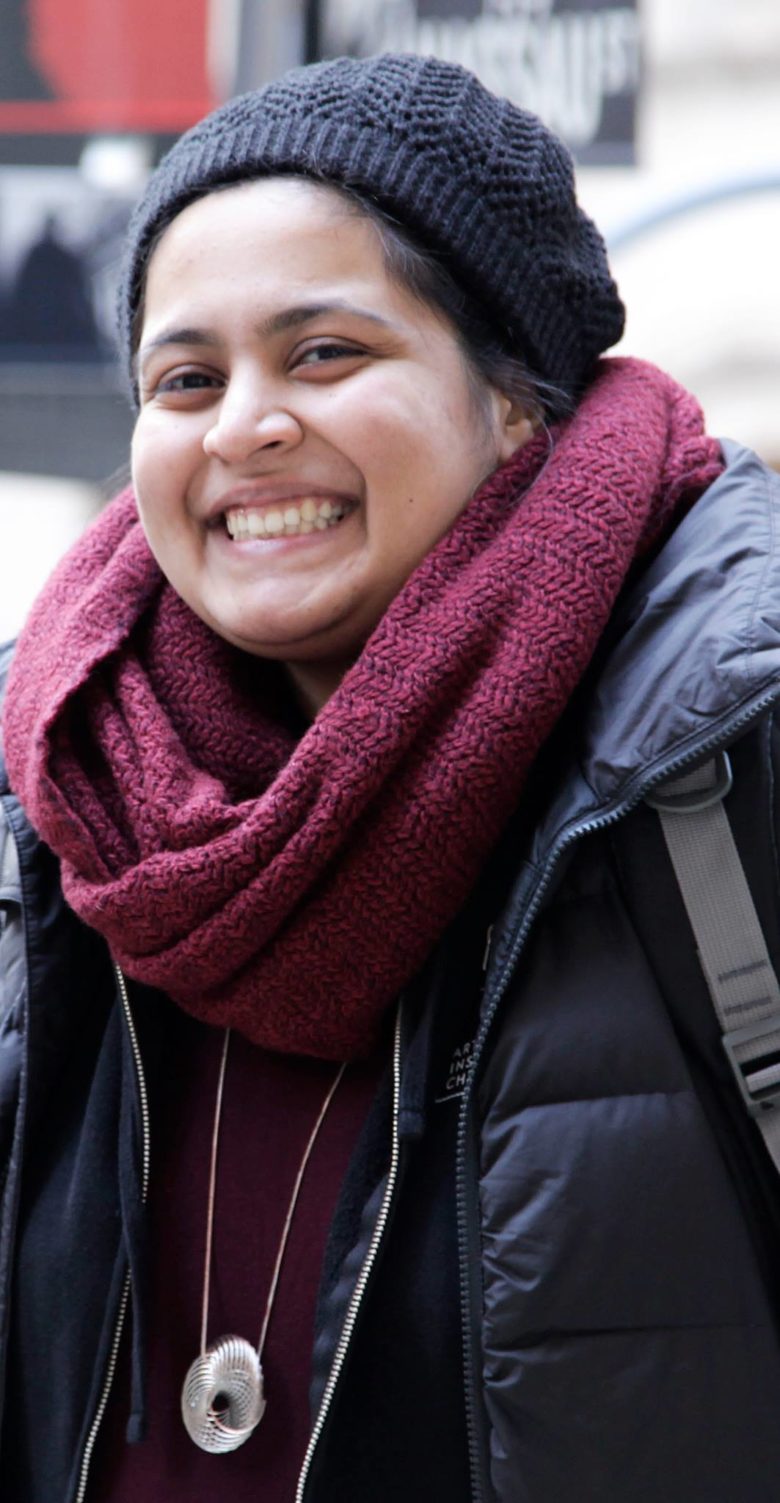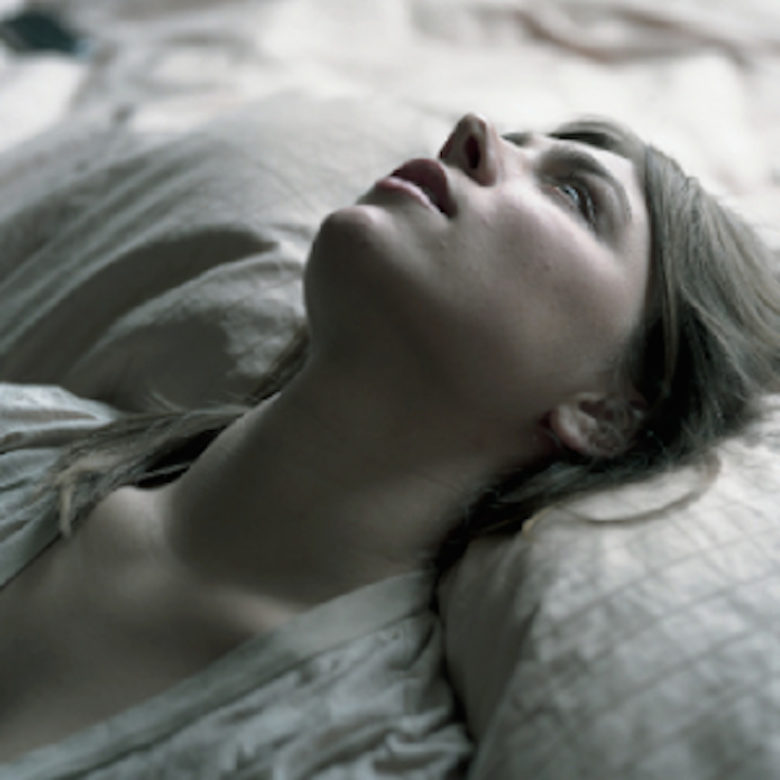Meet Artist Residents
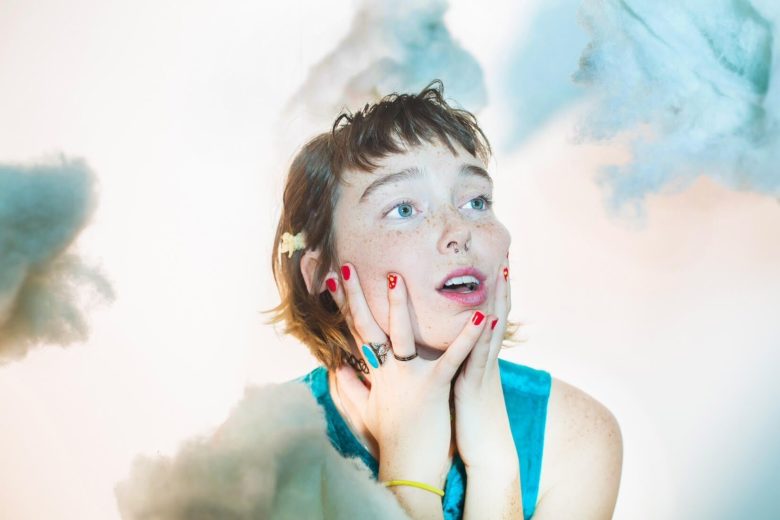
as i write this, i want to rewrite it. tomorrow it will change. i'll feel differently. i believe in myself and the universe providing. i respect bold moves, no shame, and desires for making people feel uncomfortable. be it. i'm an intense critic of the culture and i find myself in. its becasue i question everything. i beleieve in life-like art. i'm skeptical of the definition of a woman. i don't believe in what i know. i don't believe in defining myself as one thing or another. but sometimes i do? i definitely accept execptions. in honestly with yourself and others. in dishonesty with others and art. self expolitation interests me. what is it? what does it mean? producing images of myself has become an obsession to try to pin down my identity. i prefer to explain my experience and utilize myself in my art. i'm searching for my 'identiy' which is actually changing as i'm writing so how the fuuCk? i don't feel the need to caption my life or remember every moment. (it happened. it exists). "but you're a photographer!!!" they cry. with a long sigh i ask, "well what is a photograph?"
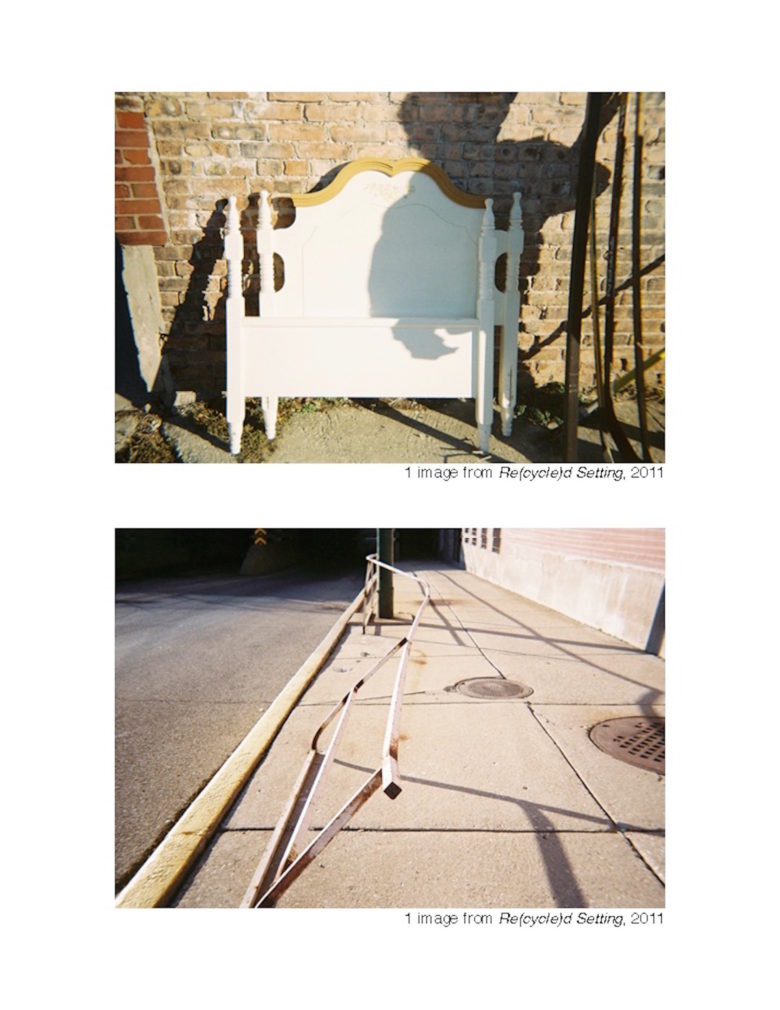
I see ?possibilities? now in the photographs I take. The work is heavilyinvested in an epiphany I had at the Art Institute of Chicago with DutchModernist Theo Van Doesburg?s painting Counter Composition VIII. It has an oddtilted framed that seemed to cause me to suddenly see the painting as if it werepopping outof the wall like a pixel. This totally flat plane suddenly was like awindow into another space with multiple white planes; just like the one I was in. In a moment, I had the experience of being unable to any longer precisely define what was real and what wasn? t. It was so quiet, and so satisfying. I can only describe it as if I was suddenlyliberated from some vast decimal system; a sense was granted that there?s more towhat we see around us. We really can move through space, and deconstruct ourhabitual vision. Visually, I have tended to be more of a micro-than a macro-person. I often getso immersed in a subject and magnify it so much that it becomes hard for me tolook at it from a distance. But after this event something happened; I startedproducing work from the painting, and as if falling down a rabbit hole, I didn?tknow where I was going. Things began to gel when the process took me back to aphotograph I had taken in Lahore, Pakistan over a year ago. I began realizing this experience I?d had with the Van Doesberg was something that had been hinted at in other moments, and that I?d been skirting these same insights or experiences in the past, including in this photo from Lahore. I beganusing and manipulating this photo to produce most of the works you see in myportfolio, amplifying and exploring the possibilities of this pixelated, mind-body insight. The writings of Agnes Martin, introduced to me by a professor, really helped me tomake sense of my process and what I was seeing; they gave me full permission tojust trust these strange-seeming intuitions, and explore them. I?ve come to understand my work as a process of actually refining my awareness,and my self. I?ve passed through that boundary where I seem to realize it?s notjust job/ hobby/work anymore. I guess you could call this process ?spiritual?,though that seems limiting. It gives an unknown joy. It makes me value theeveryday details of life?s light, and its shadows. The work is about thequietness of the repetitive patterns of our daily lives. It has its unique rhythmwhich I hear everywhere around me. I see strange systems of chaos and orderaround me; the beauty of monotony, yet the complexity of it at the same time. Thepieces seem to allow me to focus, but then again push me back again so I can seefrom a distance: the tension of micro and the macro.
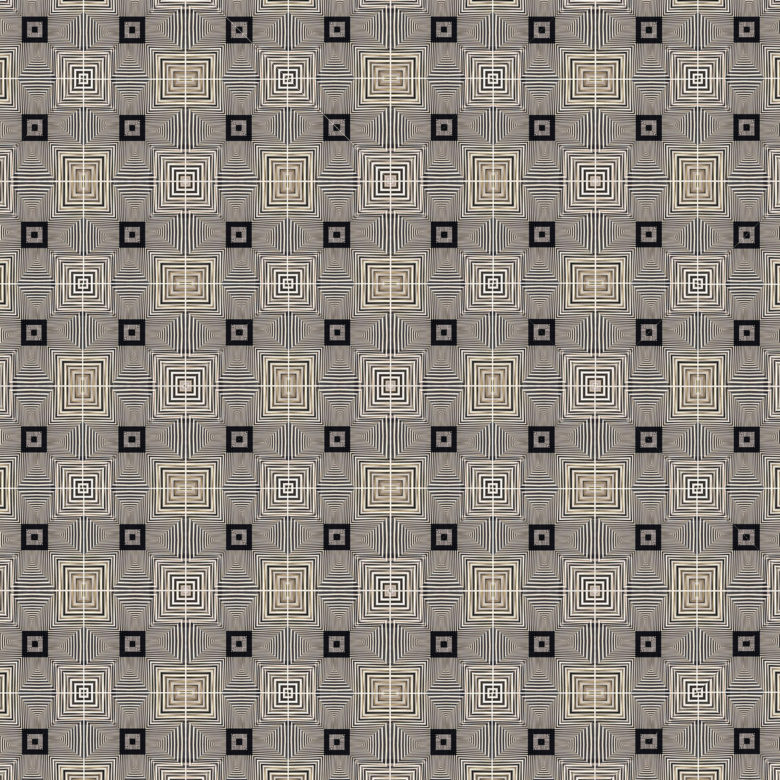
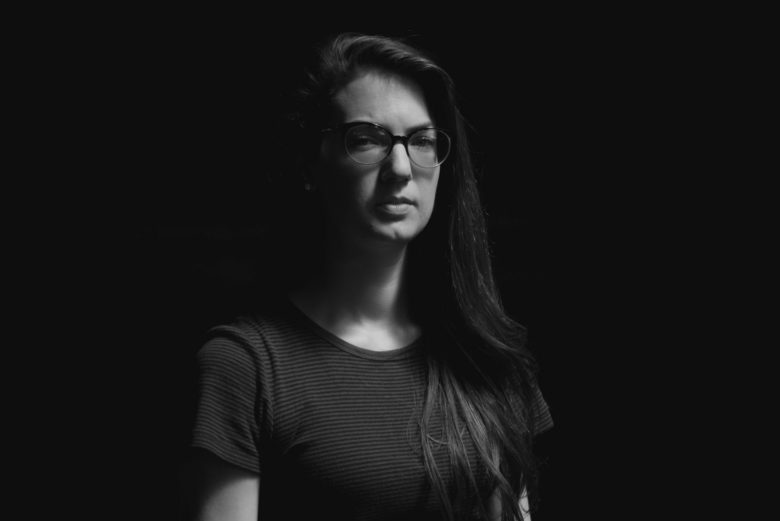
My work explores the relationship between the human condition andthe eagerness to understand past memories. As we move forward in time,we leave traces of who we are which dictates how we will be perceived byfuture generations. Through the collection of items that are discarded orleft behind, I began to defne my position as an artist by my emotional andaesthetic attachment to these knickknacks. The use of such items in mywork is intended to convey a search for purpose and relate to my sense ofcuriosity and aesthetic vision. These items are often functionless, showtraces of human trafc, and are often dated, which sparks an interestingfeeling of nostalgia. Using these items re-purposes them in a way thatcreates a narrative as well as ofering an alternative view of past realities.Using collage to explore abstraction has informed my fgurative work byallowing me to discover interesting uses of color and composition. It is myhope that my work provides elements of surprise and frustration. It is acommon theme for us as humans to seek out answers though our past,and my work is a manifestation of this exploration.
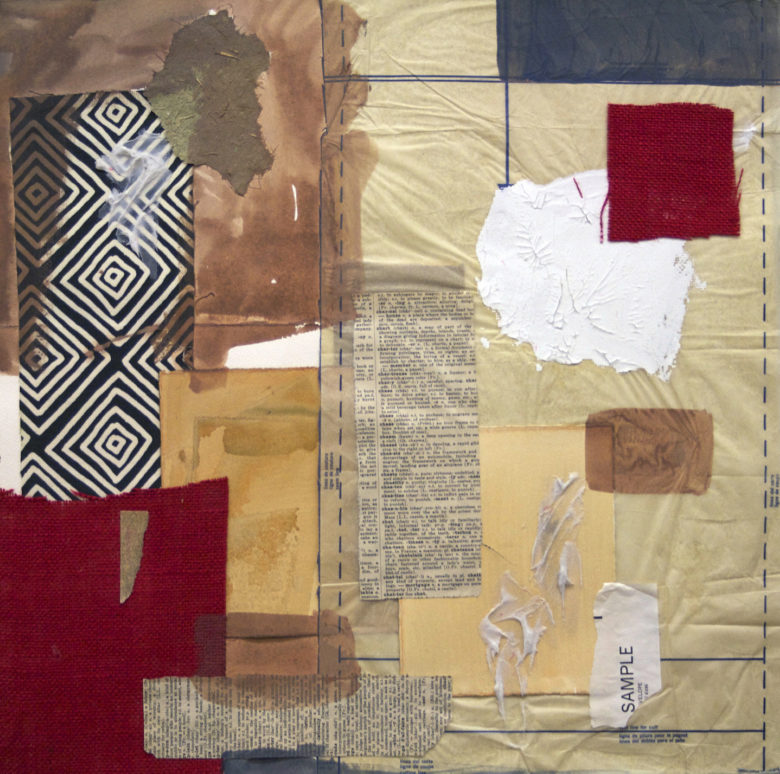
My work highlights thesimilarities between big and small--between whathappens on the bus and what happens on the news. With a jovial spirit and bullish ambition, my work takes on questions of meaning in both art and the human endeavor. My performances affirm that there is meaning in the world, even if someone like the artist must construct it. I make movement-based performances that complicate the distinction between visual art and dance. I have been directing a four-person ensemble entitled, The Meaning of ?Maybe? Project since the Fall of 2012. Our process has been to have weekly rehearsals that reflect my playful, yet serious investment in cultivating meaning through uncertainty in the process of developing a work of art: First, I provide prompts to generate the material that will evolve through a series of changes to become our final piece. This could be seen as the posing of a question. (I ask the ensemble: How can your body move ? maybe??) Second, the members of the ensemble respond; each uniquely. The most important thing to note is that my only rule in this portion of the process is that ensemble members ONLY do things that they would love to do. This is important because the world is already too full of people who are not doing exactly what they love to do and I believe the audience may feel a fuller version of their life when they see us filling up our lives with gestures we love to perform. (Jana will repeatedly stand up, and then slouch back down to the floor. Joshua will try to shake his head ?yes? and ?no at the same time.) Third, we look back on what we have made in response to the prompts and decide what elements we would like to cultivate. We call this portion of the process ?gleaning? and for us it is a celebration of affirmation. We keep what is interesting and allow the less interesting to naturally fall away. (I ask Jais and Johanna to attempt to stand up and slouch down repeatedly while shaking her head ?yes? and ?no?.) Then, we ?pivot? the work.The ?pivot? is an extremely important part of our process. It is how we breathe additional life into the work; how we amplify the color, accelerate the tempo, and add humor to construct meaning and cultivate the work we wish to share. (I will ask Jais and Johanna to hold hands while they stand up and fall repeatedly, while shaking their heads ?yes? and ?no?. I will then ask Jana and Joshua to present an overlapping dialogue about watching their friends struggle to decide whether to get married.) Through the ?pivot? process, it is possible for a different kind of sense to be made, for meaning to accumulate more specifically. Finally, we rehearse the piece so that we can know it intimately before presenting the outcome to the audience. (The ensemble presents what we made together while I witness the final execution from the back of the room.) It is in this part of the process that the force of collaboration and honor of being an artist astounds me. (The audience always finishes the piece.)
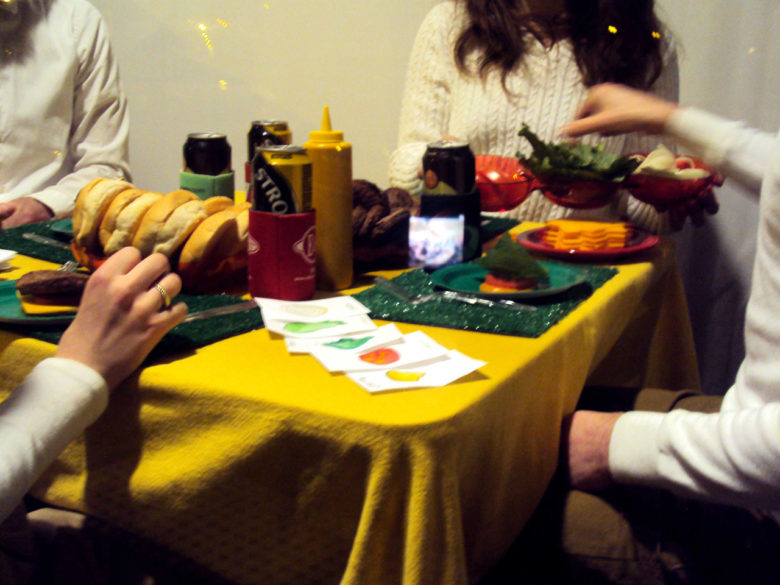
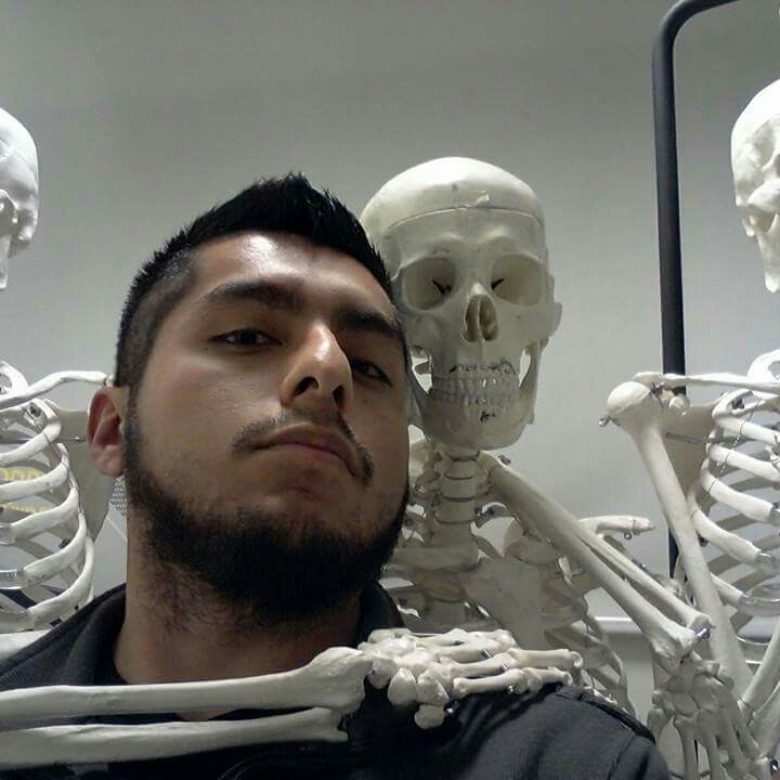
Fine art is a creative outlet which enables me to express myself and how I perceive the world around me. The search for truth often leads me think about certain aspects of my life in a compulsive manner. Therefore, I draw about my thoughts in order to expel them from my head and to ultimately make sense of them. I use drawing as a form of visual storytelling and am inspired by how my life experiences shape my identity. There are many things that inform my drawing style such as macabre imagery, Old Master drawings, and Baroque era paintings. In the same manner, I enjoy watching television shows and movies with supernatural themes to inspire my drawings. I’m interested in obsessive mark making as a cathartic process. Letting my subconscious dictate my pieces allows me to lose myself when I draw which helps me deal with my emotions. I am a very patient individual and I exploit that when I draw. I explore the use of dry media such as charcoal and ballpoint pens, layering the material, often for hours at a time, to slowly and meticulously create value in my drawings. It’s a process that requires focus and discipline but it brings me a sense of calm. My recent body of work is influenced by fear, frustration, and heartache as a result of coming to terms with my sexuality. The body, masks, and faces, often drawn from memory, are recurring motifs in my drawings which serve as metaphors about how I was affected by my emotional experiences. I’m a quiet and reserved individual and I explore those qualities in my work. As a result, I purposefully obscure some parts of my drawings or have them emerge out of darkness to evoke a sense of mystery. The resulting imagery is often stark yet intimate and reflects my emotions. The creation of art not only allows me to express myself but also to persevere in the face of adversity. As a result, I’ve developed a strong work ethic which motivates me to learn more in order to solve problems. In an era of contemporary art, I value the importance of exploring new ideas and disciplines in my art making practices. Therefore, I truly believe that keeping an open mind is essential which will not only strengthen my work but diversify it as well.


I make work that shows the connection between people and the spaces we occupy. Both physically and digitally, we create browsable identities of ourselves. We are naturally attached to the idea of home, we work to make it ours and personify ourselves within it. I depict spaces that are meant operate as portraits of the inhabitant, messy and complex yet highly specific and obsessive. There is a constant push and pull between living in a space, and trying to make a space reference an identity that is in flux. I focus on the spaces around me as a way of understanding the greater narrative of how we live. Our real and digital lives are haphazard and disorganized. I work to reference this by overwhelming the viewer while guiding them to find a self-reflective sense of clarity. The mark making and sensuality of material is meant to entice the viewer to stay with an image. As we are constantly trying to complete ourselves with new things, images, and data, we need to slow down in order to discover our present selves. My process is founded in drawing using a camera. Photoshop, and my sketchbook to have a control and freedom to compositionally play before I create my final image. I stitch photographs together and overlay them with marks that have the delicacy and fixative attention of lace. The distorted curve of the images work to highlight how we slowly perceive a space; in an ark, unlike standard photographic perspective, and slowly between each detail. Directly referencing the bent perspective of Rackstraw Downes and combining it with the cubist references David Hockney makes in his photo works, I allow for the viewer to take multiple paths within the image but also highlight the fractures and how they relate to one’s incomplete path towards self-actualization. The control of marks and specificity in what I choose to focus on help to control the viewer’s read, however since they are not confronted with a figure, the viewer can enter into the space in any way they choose. The scale of the images create screen-sized experiences for the viewer. The spaces within those screens are meant to operate in a similar way to the Tumblr Dashboard; a slow filter through the mass of images to find things one gravitates toward. The highly concentrated areas are meant to be the gravitational points for the viewer to keep their bounce rate with the image low. While there is an emphasis on how the work relates to the rise of a post-empire Internet culture, I want there to be a distinctive point of material entry that divorces the images from their digital reference. I hope that my work can embody a non-present figure, and note the ways in which our spaces reflect an identity. The marks are meant to hold the attention of viewer and have a meditative moment with a tangible image. The works operate as vignettes made to give the viewer references points to place themselves in and understand how they perceive the world through their on and offline spaces.
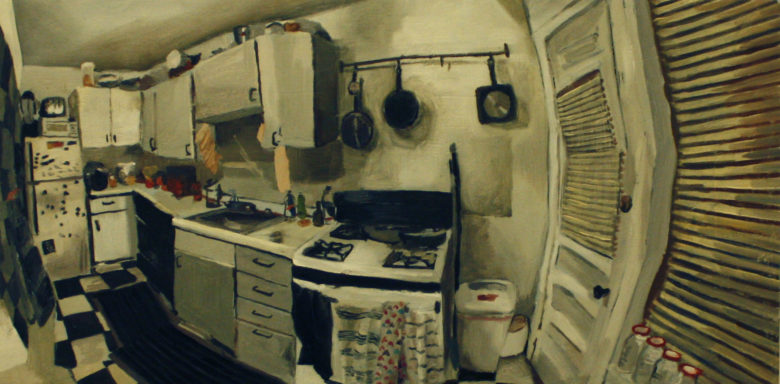
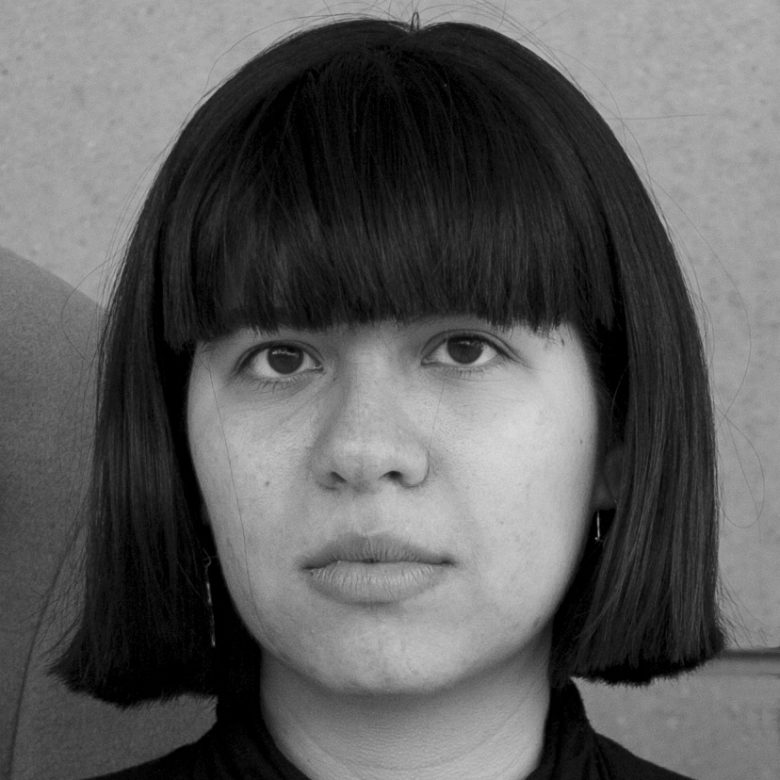
I use photography as a means to examine the relationship one had with domestic space. The focus of domesticity steams from my summer taking care of my 8-month-old sister. The confinement of being at home left me wondering how my summer would have played out if I did not have to watch my sister. By photographing girls my same age revealed my longing to be apart of a space that had no maternal attachment. From photographing others I then turned to looking at my own apartment, which I share with three other roommates, finding places where out possessions have mixed together. This mixing demonstrates how our coming together through our belongings builds a sense of home.
